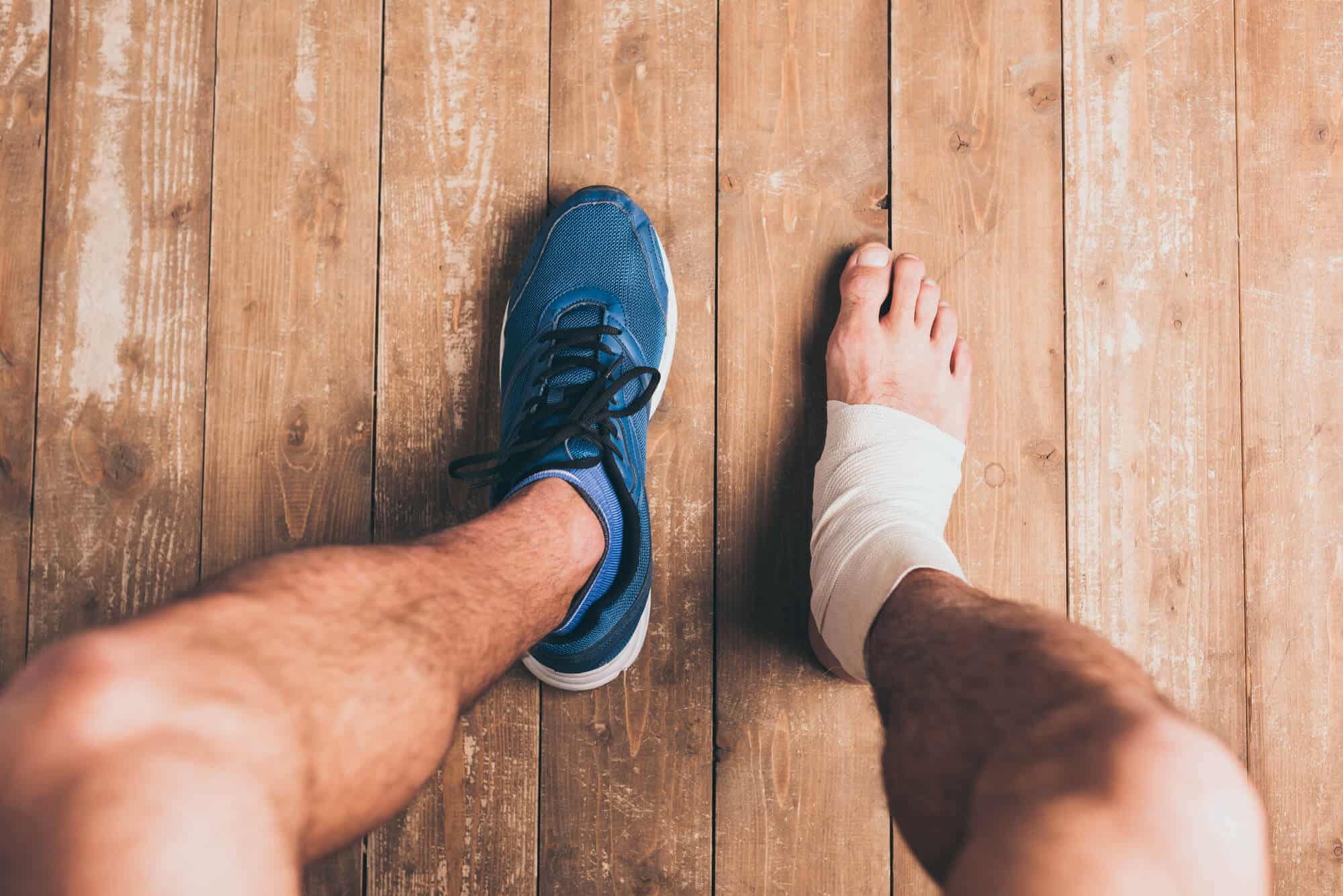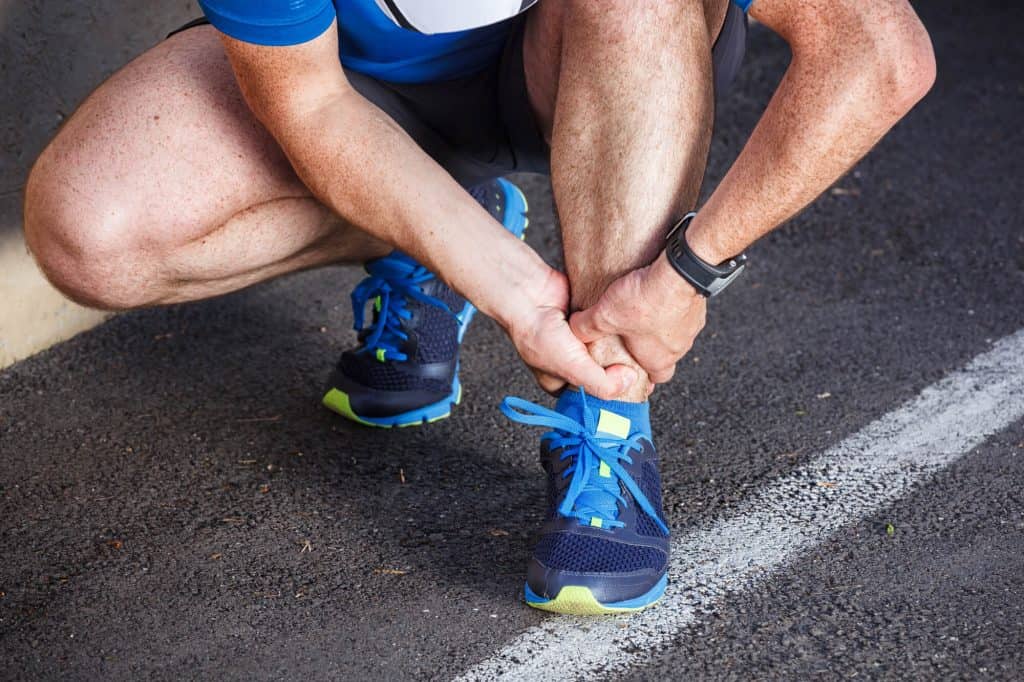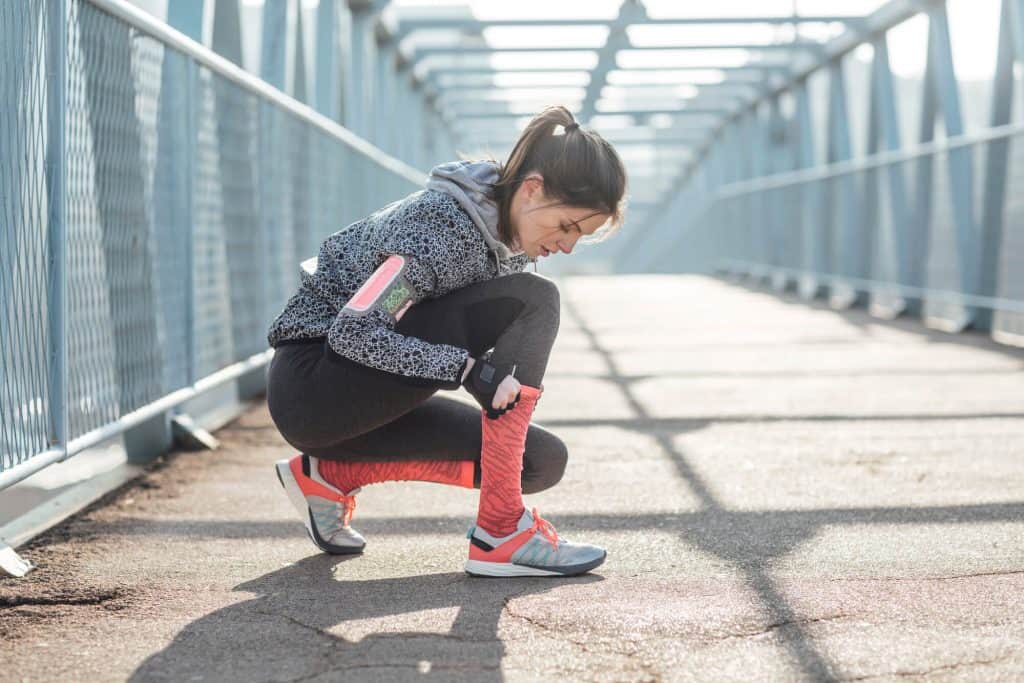If you’ve been running for a while, you’ve probably felt discomfort in the bottom of your feet with a hot sensation and you’re wondering what that could be and whether it’s going to blister, and that’s where this guide hops in for the help!
One thing you need to know about hot spots on foot is that they’re a precursor of blisters, and if you manage them, you can avoid the blisters altogether, so it’s important that you become familiar with them and how to manage them to protect yourself from painful blisters.
If you want to learn more about hots spots on foot, what causes them, and how to prevent them, keep on reading this guide as we walk you through everything you need to know about this kind of pressure injury.
What Exactly Is a Hot Spot on Foot?
Hot spots on Foot, also known as “red spots”, are a common form of pressure injuries, which are caused due to exerted pressure on certain areas in the skin of the foot that come in contact with the rough surfaces.
Some people also call hot spots “pre-blisters”, because they’re usually a precursor or initial stage of blisters in formation. These injuries develop when the top layers of skin are exfoliated due to friction, which triggers a mild form of erythroderma.
Although hot spots on foot are quite harmless on their own, they’ll develop into blisters, corns, or calluses if they’re left untreated or if you continue running on them.
These conditions, on the other hand, are much more painful and take a long time to treat, which can keep you off the tracks for quite some time.
How to Identify Hot Spots on Foot
As the names suggest, hot spots are characterized by their localized warmth, along with slight redness and tenderness in the affected area.
The redness could be accompanied by some nagging pain, but the pain is so subtle that most people may not feel it at all, especially those who suffer from neuropathies.
Since hot spots are easy to miss, it’s very important that you check your feet after every long session of running to make sure that you don’t have one.
Hot spots on foot will usually develop at the main pressure points of the feet but can also develop on the ankles and heels, so you have to look for them there as well.
How Long Does a Hot Spot on Foot Last?
One of the biggest issues with hot spots is that they don’t last for long. In fact, a hot spot is expected to last for anywhere between 2 to 10 minutes, depending on its severity.
However, this is not particularly good news because they’ll quickly develop into a blister. Once you start feeling sharp stinging pain, the hot spots have already turned into a blister.
Unfortunately, blisters can then take anywhere between 3 to 7 days in order to heal, besides being much more painful than hot spots on foot.
What Causes Hot Spots on Foot?
Although most hot spots will look quite similar, they can develop for a wide range of factors, and knowing these factors is the key to managing them and preventing them from developing into painful blisters and calluses. So, here’s a quick look at hot spot causes:
1. Excessive Friction with the Socks
As previously mentioned, hot spots are mainly caused by the exfoliation of the upper layers of the epidermis in specific spots in the feet where contact is medium with the surrounding.
Since our feet are usually covered by socks, they’re usually the main culprit behind hot spots. For example, hard socks that are made from relatively rough fabrics are good for keeping your feet warm but they can cause excessive friction, which leads to the development of hot spots.
Similarly, socks that are made from a single layer of fabric are too thin to absorb shocks, which can also be a problem while running.
2. Wearing Poorly Fitting Shoes
Your footwear isn’t only meant to absorb shocks and help you walk or run properly, but they’re also designed to keep your feet in a natural and comfortable position while standing, walking, or running.
If you wear shoes that are too loose, your feet won’t be locked in place, which causes the skin of your feet to slide around while moving, leading to pressure injuries such as hot spots, calluses, and even open wounds.
On the other hand, wearing shoes that are too tight will keep your feet in an unnatural position, which puts excessive pressure on certain spots while moving around, leading to hot spots or worse.
3. Running Very Long Distance at a High Pace
Although friction is one of the most common methods to get hot spots on your feet, overuse and excessive pressure on a certain spot can also cause them.
In fact, even if you’re wearing proper shoes and socks, running an extremely long distance at a very high pace causes heavy pressure on a certain spot on the feet. These end up developing into hot spots that are noticeably tender and red.
4. Running Barefooted or On Rough Terrain
Although wearing improper socks or shoes can put the skin of your feet in heavy friction, running barefoot or wearing thin socks alone can cause much worse damage to the skin layers, which speeds up the development of hot spots.
Not only that but running with thin-soled shoes on extremely rough terrain may also cause hot spots and blisters on your feet, even if they’re properly fitting.
Rough terrain doesn’t have to be uneven. In fact, running on concrete for a long time can trigger hot spots on the feet, which is why it’s always recommended to run on trail tracks or running tracks that are lined with polyurethane for better shock absorption.
5. Unclipped Toenails
Experienced runners always recommend wearing relatively tight running shoes in order to avoid excessive friction while running.
However, if your nails start to grow long, they can end up jamming your toes a little inside the shoes. This can cause severe pain while walking and running and hot spots appear around the nails.
This can also happen if you don’t cut your toenails properly. Leaving sharp edges can rub against other toes, which can cause hot spots to develop into blisters before you know it.
6. Certain Foot Conditions
There are various foot conditions that can cause hot spots to show up on the feet. One of these conditions is plantar fasciitis, which is a painful inflammation in the ligaments that connect your heel with the front of your feet.
Plantar fasciitis patients will walk awkwardly to avoid triggering the pain in their soles and heels, which put excessive pressure on certain parts of the foot, developing hot spots.
7. Feet Abnormalities
In addition to plantar fasciitis, hammertoes and bunions are also painful conditions where bony bumps on the foot are under constant pressure against tight-fitting shoes.
Surgeries to remove them are known to help greatly in reducing the risk of hot spots and other pressure injuries.
8. Other Causes
In addition to all these causes, there are other situations and conditions that are not related to running in which the feet can develop hot spots without excessive friction or pressure, such as:
- Heavy metal poisoning
- Hormonal disturbances, including menopause and pregnancy in women
- Neuropathies weaken the sensation of the feet, making excessive friction go unnoticed. Neuropathies can be caused by deficiency of essential vitamins like vitamin B6 and B12, but can also happen to due nerve traumas
- Some types of chemotherapy
In most of the previously mentioned cases, the frequent hots spots will go away when the triggering factor is gone.
Tips to Avoid Hot Spots and Their Progression into Blisters
Now that you know more about hot spots as well as the causes and triggers of this annoying pressure injury, here are some valuable tips that can help you avoid having them or prevent them from developing into painful and long lasting blisters:
Buy Better Fitting Shoes
According to a 2018 study published in the Journal of Foot and Ankle Research, participants that wore ill-fitting shoes reported more frequent pain in their feet as well as more incidences of foot disorders.
When buying shoes, make sure that you try them first and see if they give you a snug fit with a small wiggle room to keep you comfortable
You should also consider giving the shoes a quick test run and see if their heel lift and upper are keeping you comfortable while preventing your feet from sliding around.
Choose Suitable Socks for Running
Damp socks are much more likely to make your feet tender, and therefore, develop hot spots while running.
For that reason, always make sure that the socks you’re buying are capable of wicking moisture to keep your feet dry.
Avoid cotton socks because they absorb moisture and stay damp. Also, avoid socks that are too thin, too loose, or have rough seams.
If you’re comfortable with a specific type of socks, it’s probably best to buy multiple ones of the same type because they’ll provide you with consistent thickness and performance.
Also, always take spare socks with you while running or hiking so that you can switch into them if your socks got wet for any reason.
Apply Foot Lotions After Running
Although damp feet are not the best option for running, it’s quite essential to moisturize your feet immediately after running.
Using foot lotions will not only improve the quality of their skin, but they’ll also make them less likely to develop hot spots because moisturized skin heals much quicker.
Use Athletic Tape to Protect Blister Prone Areas
If you can’t find a way to protect certain spots in your feet, you can apply some athletic tape on the spot.
This kind of tape has a special fixing ability that prevents your body from moving around much while running, so it’ll protect that specific part from friction.
Keep Blister Treatments in Your Medicine Cabinet
Last but not least, it goes without saying that applying blister treatments on the skin before turning into a blister will greatly lower the chance of its development.
There are several effective treatments that you can keep on you while hiking or running, such as benzoin tincture and alcohol wipes. Applying these treatments over a hot spot will help it heal very quickly.
Final Thoughts
This wraps it up for today’s guide that walks you through everything you need to know about hot spots on foot and what you need to do about them.
The best description for hot spots is that they’re the primitive stage of a blister, and luckily, caring for a hot spot will prevent the pressure injury from developing into something much more painful.
As you can see, it can happen for a wide range of causes, but you can follow the previously mentioned tips to stop them in their tracks!



